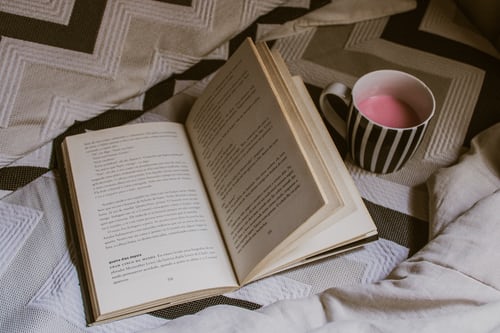Inspiring Older Readers
 posted on 23 Oct 2015
posted on 23 Oct 2015
The pleasures of a slim volume
I wonder how many of you have looked at some of the recent new publications in bookshops and thought ‘Oh, no. Not another 600 page block-buster! I’ve only just finished hacking through the last one..’ This hasn’t been scientifically proven but I have a readers hunch that books are slowly but surely getting longer - but that doesn’t mean they are necessarily always getting better as a result.
It’s true that there have always been epics in every genre – fiction, history, biography – but they tended in my experience to be bucking the trend. Now I suspect their once unusual size is bang on trend. Over the past couple of years we’ve had The Goldfinch by Donna Tartt (784 pages) and The Luminaries (848 pages) by Eleanor Catton and this year’s Booker list had Hanya Yanagihara’s A Little Life ( 736 pages) and the winner of that prize, Marlon James, with 704 pages of ironically titled A Brief History of Seven Killings.
So what’s going on? Why the paper inflation? This is mostly guesswork but I suspect there is some element of all of the following at work here:
- · An unconscious equating of length with quality. If it takes up all this paper and all this writing effort it must be worth it….mustn’t it?
- · An assumption that the reader or the book buyer wants ‘value for money’. Why would I pay £18.99 for a 200 page book when I can get a 700 page one for the same price?
- · Publishers indulging ‘the talent’ – if the writer wants a big book, the writer can have a big book. Publishers have a lot invested in their successful authors or in making their authors a success and they aren’t going to be eager to risk them getting stroppy about the size of their creations.
- · Lack of a strong editor. I’m not really equipped to talk about the writer/editor relationship but I suspect that in these straightened times there is less editorial time to spread around the author stables. The days when an editor was almost as important as the writer to the finished product seems to me to have either waned significantly or disappeared altogether.
- · The lifestyle/coffee table effect. Even if you’re not actually going to read the latest breeze-block of a best seller, if it’s the right name with the right cover, they’re impressive things to leave lying around for your friends to admire.
It is, of course, perfectly possible that I’ve missed the target completely here and that something else is driving this urge to bigness. Whatever the reason, I want to make a plea for the pleasures of the slim volume, perfectly crafted, modest in size and big in ambition. When I was younger I would never go anywhere without a book tucked into a jacket pocket – if I wanted to do the same now with many of the new releases I’d need to be wearing a gamekeeper’s overcoat to accommodate my reading. And, it’s worth noting that some of the most influential books have been comparative slips of paper. The Great Gatsby, A Room of One’s Own, The Hound of the Baskerville’s, Frankenstein, Animal Farm, Brokeback Mountain ……….and plenty more all come in at around the 150 page mark. It’s hard to imaging that pumping them with steroids until they inflate to 500 pages would do anything other than damage.
There is, of course, one other compelling argument for the slim volume – you can read it in bed. In my opinion a killer argument in favour of a modest sized book. Firstly, a slim book wont break your thumb as you try and keep it levered open at the right page; perhaps more critically, it’s not going to kill you when you drop it on your face as you fall asleep.
So let’s hear it for a return to slim books – we've had a national debate about an epidemic of obesity amonst the population but it's not just people who are struggling with their weight, it turns out it's books as well.
Terry Potter
October 2015